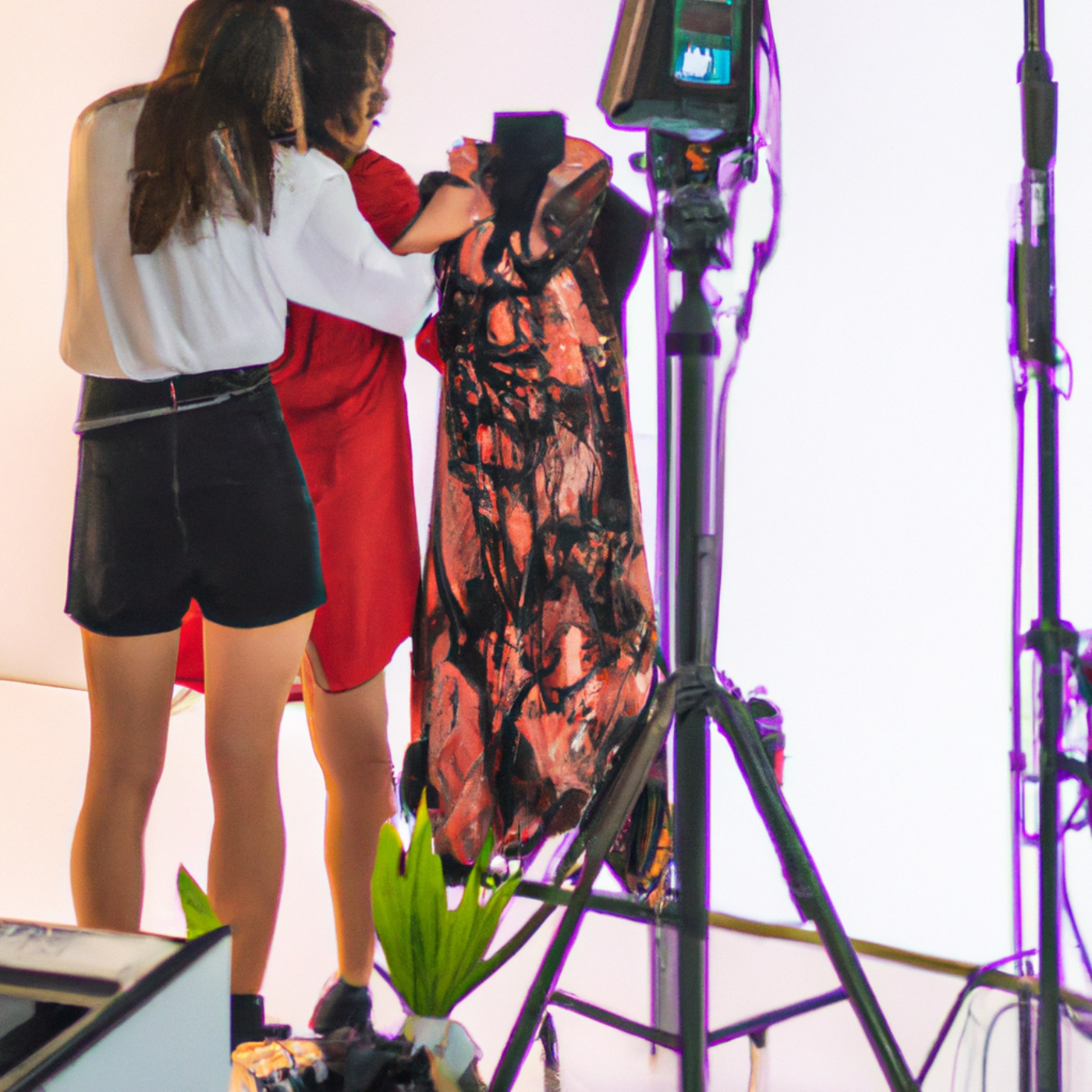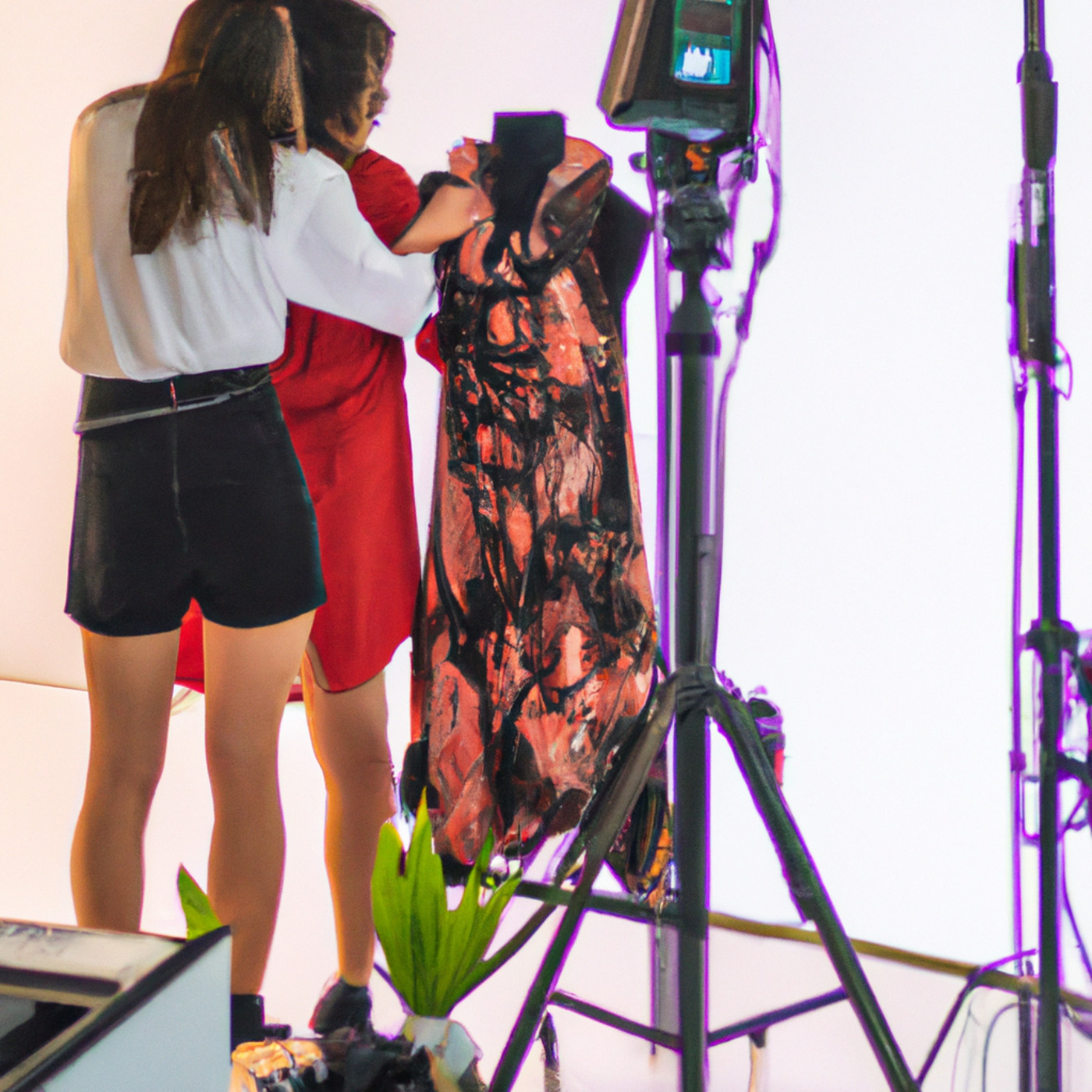
Fashion e-commerce is booming, and high-quality product photography plays a significant role in driving sales. For fashion brands, from small independent shops to global powerhouses, compelling images are the key to grabbing attention and converting viewers into buyers. If you’re a fashion photographer or a brand looking to improve your product shots, this post will offer practical tips, techniques, and gear recommendations to help you stand out in the crowded online market.
Why is Fashion E-commerce Photography Important?
In the fast-paced world of online fashion, customers don’t have the luxury of feeling the fabric or trying clothes on. That’s why well-lit, crisp images that capture the details, texture, and color of garments are crucial. Fashion e-commerce photography allows you to communicate the value of your products visually, and a polished image can often make the difference between a sale and a missed opportunity.
Your goal as a fashion photographer is to create a story that resonates with your target audience—whether it’s sleek minimalism or playful, bold fashion statements. With the right tools and techniques, you can ensure that your images not only showcase the products but also evoke emotion, style, and confidence.
Getting Started with Fashion E-commerce Photography
Before we dive into gear recommendations, let’s go over some basics to help you elevate your fashion product photography.
1. Understand Your Brand’s Identity
Whether you’re photographing for a client or your own brand, you need to understand the style and personality that needs to be conveyed. Are you going for a minimalist, high-fashion look, or something more casual and approachable? Defining this aesthetic will guide your composition, lighting, and editing choices.
2. Lighting is Everything
Proper lighting is essential in e-commerce photography. For fashion, soft, diffused lighting is often the best choice as it eliminates harsh shadows and evenly illuminates the fabric. Natural light can work, but using studio lights or softboxes gives you more control over the outcome.
A common setup is a three-point lighting system with a key light, fill light, and backlight. If you’re shooting on a white background, ensure that the lighting is even to avoid distracting shadows and reflections.
3. Focus on Details
Fashion photography isn’t just about the full outfit; close-ups are equally important. Highlight unique textures, patterns, or details like stitching and buttons to give shoppers a sense of the quality and craftsmanship.
4. Post-Processing
Editing your photos is the final touch that can make your images pop. Correct color inaccuracies, enhance contrast, and fine-tune the exposure to create images that stand out on any platform. Tools like Adobe Lightroom or Capture One are industry standards for editing fashion e-commerce photos.
Gear Recommendations for Fashion E-commerce Photography
When it comes to choosing gear, both beginners and professionals can benefit from equipment that enhances the quality of their photos without breaking the bank. Let’s break down some recommendations by skill level.
For Beginners: Affordable but Reliable
Starting in fashion e-commerce photography doesn’t mean you need the most expensive gear. Here are a few budget-friendly yet powerful tools:
Cameras:
- Canon EOS Rebel T7i: This DSLR is perfect for beginners. With a 24.2 MP sensor, it offers excellent image quality, and its user-friendly interface is great for photographers who are still learning.
- Sony Alpha a6000: As one of the best entry-level mirrorless cameras, the a6000 provides great image quality with fast autofocus, which is especially useful when working with live models.
Lenses:
- Canon EF 50mm f/1.8 STM Lens: Known as the “Nifty Fifty,” this lens is a budget-friendly option that delivers sharp images with a shallow depth of field, making your subject stand out against a blurred background.
- Sony 50mm f/1.8 OSS: For Sony users, this lens offers beautiful bokeh and works well in low-light conditions, perfect for studio settings.
For Intermediate Photographers: Stepping Up the Game
Once you’ve mastered the basics, you may want to invest in higher-quality gear that offers more creative control.
Cameras:
- Canon EOS 90D: With a 32.5 MP sensor and excellent autofocus, the Canon EOS 90D is great for intermediate photographers who want more control over their image quality and flexibility in different lighting conditions.
- Fujifilm X-T4: This mirrorless camera is a favorite among fashion photographers for its sharpness and impressive color reproduction, making fabrics and details pop.
Lenses:
- Sigma 24-70mm f/2.8 DG OS HSM Art Lens: This versatile zoom lens is perfect for capturing both wide shots and close-up details, all with consistent image quality.
- Canon RF 85mm f/1.2L USM: Ideal for portrait fashion photography, this lens delivers stunning clarity and bokeh, making your subject stand out with professional sharpness.
For Pros: High-End Gear for Serious Results
If you’re a professional fashion e-commerce photographer or aiming to take your portfolio to the next level, investing in top-tier equipment will help you produce flawless images every time.
Cameras:
- Canon EOS R5: With its 45 MP sensor, the Canon R5 offers incredible image resolution and performance. It’s perfect for high-end e-commerce shoots, especially if you’re working with luxury brands where details matter.
- Nikon Z7 II: Known for its stunning dynamic range and superior autofocus, the Nikon Z7 II is a mirrorless powerhouse for professionals who need precision and speed.
Lenses:
- Canon RF 24-70mm f/2.8L IS USM: This professional-grade lens offers excellent versatility and is perfect for both studio and on-location fashion shoots.
- Nikon Z 85mm f/1.8 S: This portrait lens is ideal for professional fashion photography, offering sharpness, fast autofocus, and beautiful background blur.
Accessories to Enhance Your Fashion Photography
No matter what level you’re at, there are some must-have accessories that can make your fashion e-commerce photography easier and more professional.
- Lighting Kit: A complete lighting setup with softboxes, like the Neewer Softbox Lighting Kit, will ensure even, diffused lighting for studio shoots.
- Tripod: Stability is key when shooting fashion products. The Manfrotto Befree Advanced Tripod is lightweight and portable, making it perfect for both studio and outdoor shoots.
- Reflectors: Using a reflector like the Neewer 5-in-1 Reflector helps you control shadows and highlight certain parts of your subject without the need for extra lighting.
Conclusion: Craft Your Signature Style
Fashion e-commerce photography is as much about creativity as it is about technical skills. Whether you’re working with beginner gear or professional-grade equipment, the most important thing is to develop your unique style. Remember, the goal is not just to showcase the product, but to create a narrative that connects with your audience.
From choosing the right camera and lens to perfecting your lighting setup, every piece of equipment you invest in should help you achieve your vision. Experiment, refine your techniques, and most importantly, have fun capturing the fashion that inspires you.
Liked this post? Check out some of our others:
The Best Setup for Fashion Photography
Top Tips for New Livestreamers

